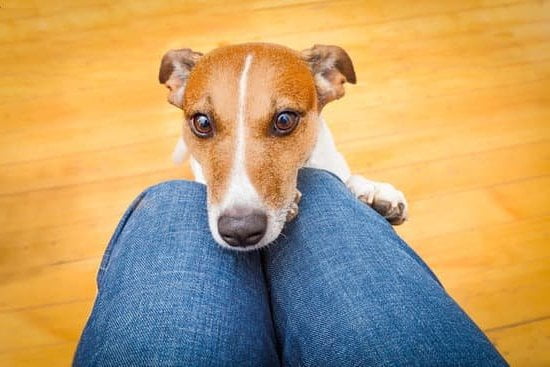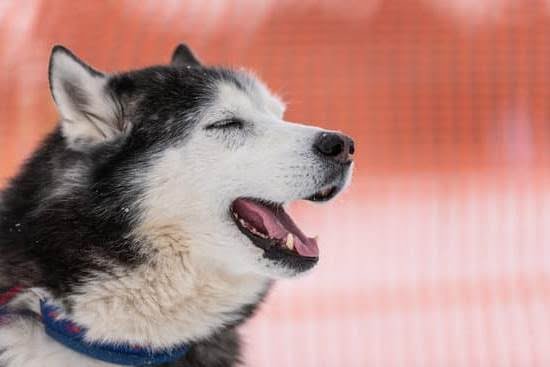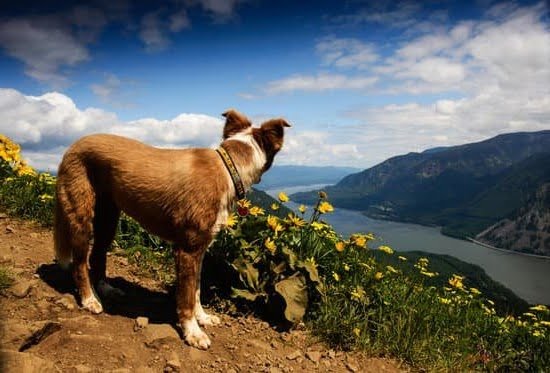Grouse hunting is a popular and rewarding activity for many outdoor enthusiasts, but it requires proper training and preparation, especially when it comes to your hunting companion – your dog. If you’re wondering how to train your dog to hunt grouse effectively, you’ve come to the right place. Hunting grouse with a well-trained dog can significantly enhance your overall experience in the field.
Understanding the nature of grouse hunting is crucial before delving into training your four-legged partner. Grouse are elusive birds that require a unique set of skills from your dog to track and flush them out effectively. Training a dog for grouse hunting involves building on their natural instincts while also instilling discipline and focus during the hunt.
In this article, we will guide you through the essential steps of training your dog for successful grouse hunting. From choosing the right breed for the job to introducing them to the scent of grouse and mastering advanced techniques, we will cover all aspects of preparing your furry friend for an exciting season in the field. Stay tuned as we explore the fundamentals of training your dog to become a skilled grouse hunter.
Choosing the Right Dog Breed for Grouse Hunting
When it comes to training your dog to hunt grouse, one of the first steps is choosing the right dog breed for the task. Different dog breeds have varying instincts, strengths, and abilities when it comes to hunting upland game birds like grouse. Here are some key considerations in selecting the best breed for grouse hunting:
Instincts and Characteristics
Certain dog breeds have been specifically bred for bird hunting, making them more naturally inclined to excel in grouse hunting. Breeds like English Setters, German Shorthaired Pointers, Brittany Spaniels, and English Springer Spaniels are known for their excellent pointing and retrieving abilities which are essential skills for successful grouse hunting.
Size and Stamina
Consider the size and stamina of the dog breed you choose for grouse hunting. Grouse hunting often requires covering rough terrain and dense cover, so a dog with good endurance and agility is important. Medium-sized dogs that can easily maneuver through thick brush are often preferred for this type of hunting.
Trait Compatibility
Evaluate your own hunting style, preferences, and expectations to choose a dog breed that aligns with your needs. Some breeds may excel at pointing and flushing out grouse from cover, while others may be better at retrieving downed birds. Understanding how each breed’s traits match your hunting goals will help ensure a successful partnership in the field.
By carefully considering these factors and selecting a dog breed that is well-suited for grouse hunting, you’ll set yourself up for success as you embark on training your canine companion for this challenging yet rewarding endeavor. Training a dog to hunt grouse requires time, patience, consistency, and a strong bond between you and your furry partner in the field.
Basic Training Techniques for Grouse Hunting
Training your dog to hunt grouse can be a rewarding experience for both you and your furry companion. Basic training techniques are essential in laying the foundation for successful hunting trips. One of the first steps in training your dog for grouse hunting is obedience training. Your dog should respond promptly to commands such as “sit,” “stay,” and “come.” This will not only help in controlling your dog in the field but also ensure their safety.
Another important aspect of basic training for grouse hunting is introducing your dog to the sounds associated with hunting, such as gunshots and whistles. This will help your dog acclimate to the noises they may encounter while out in the field. Additionally, introducing your dog to retrieving dummies can help build their confidence and retrieve instincts. Start with short retrieves and gradually increase the distance as your dog becomes more proficient.
Consistency is key when it comes to training your dog for grouse hunting. Regular practice sessions, even if they are short, will help reinforce good behavior and skills. Positive reinforcement, such as treats or praise, can go a long way in motivating your dog during training sessions. Remember to be patient and understanding – every dog learns at their own pace. With dedication and persistence, you can successfully train your dog to hunt grouse and enjoy many successful hunts together.
Preparing Your Dog for the Field
One crucial aspect of physical conditioning is ensuring your dog maintains a healthy weight. A lean body condition is essential for agility and endurance in the field. Providing a balanced diet rich in nutrients tailored to your dog’s specific needs can help achieve and maintain an ideal weight. Along with proper nutrition, regular veterinary check-ups are vital to monitor your dog’s health and address any potential issues that may affect their performance while hunting grouse.
In addition to physical preparation, mental conditioning is equally important when training your dog to hunt grouse successfully. Building focus and concentration through obedience training sessions can help your dog develop the necessary skills to stay attentive during hunting expeditions.
Incorporating scent games or puzzles that simulate the experience of tracking grouse can also sharpen your dog’s scenting abilities and prepare them for the challenges they will face in the field. By combining physical exercise with mental stimulation, you can ensure that your dog is well-prepared to tackle the demands of grouse hunting with confidence and enthusiasm.
Introducing Your Dog to the Scent of Grouse
When it comes to training your dog to hunt grouse, one of the crucial steps is introducing them to the scent of these game birds. This process is essential in developing their hunting skills and ensuring they can effectively track down grouse in the field. Here are some techniques on how to introduce your dog to the scent of grouse:
- Start by using scent pads or scent drags that contain grouse scent. You can purchase these from hunting supply stores or online. Allow your dog to sniff and become familiar with the scent.
- Hide grouse scented items around your training area for your dog to find. This will help them associate the scent with a game bird and encourage their natural instincts to kick in.
- Gradually increase the difficulty level by placing the scented items in more challenging locations as your dog progresses in their training. This will keep them engaged and continuously honing their tracking abilities.
Introducing your dog to the scent of grouse should be a gradual process that is incorporated into their overall training regimen. Consistent exposure to this specific scent will help them differentiate it from others and become proficient at tracking down grouse during hunting expeditions. Incorporating this step into your training routine will set a solid foundation for successful grouse hunting with your canine companion.
- Utilize positive reinforcement such as treats or verbal praise when your dog shows interest in the grouse scent or successfully locates a hidden item. This will reinforce their behavior and motivate them to continue seeking out the target scent.
- Practice regularly and make introductions to the grouse scent a fun and rewarding experience for your dog. Keep training sessions short but frequent to maintain their focus and enthusiasm for the task at hand.
Field Training Exercises
Training your dog to hunt grouse involves a combination of skills, including retrieving and pointing. These are crucial abilities that your dog must develop to be successful in the field. Retrieving involves bringing back the game after it has been shot, while pointing is when your dog freezes in place upon detecting the scent of grouse, indicating the location of the bird.
To train your dog to retrieve grouse, you can start by using dummy or training birds to simulate the real hunting experience. Begin by throwing the dummy bird a short distance and encouraging your dog to fetch it. Gradually increase the distance as your dog becomes more comfortable with the exercise. Positive reinforcement, such as praise and treats, will help reinforce good behavior during retrieving training sessions.
When it comes to teaching your dog to point grouse, introduce them to real grouse scent gradually. You can use scent pads soaked with grouse scent and place them strategically for your dog to find. When your dog detects the scent and points, reward them immediately to associate this behavior with a positive outcome. With consistent practice and patience, your dog will learn how to instinctively point out the location of grouse during hunts.
Repetition and consistency are key when working on retrieving and pointing exercises with your dog. Practice these skills regularly in various environments to help your canine companion sharpen their hunting abilities. Remember that each dog learns at its own pace, so stay patient and persistent throughout the training process for optimal results in preparing your four-legged friend for successful grouse hunting adventures.
| Retrieving Training | Pointing Training |
|---|---|
| Start with dummy birds | Introduce real grouse scent gradually |
| Use positive reinforcement | Reward pointing behavior immediately |
| Increase distance gradually | Practice consistently in different environments |
Fine-Tuning Your Dog’s Hunting Skills
When it comes to training your dog to hunt grouse, mastering advanced techniques is essential for a successful hunting experience. Once your dog has developed basic skills like retrieving and pointing, it’s time to take their training to the next level. Here are some advanced techniques to help fine-tune your dog’s hunting skills:
1. Blind Retrieves: This technique involves sending your dog to retrieve a grouse without seeing where it fell. This enhances their memory and problem-solving skills, making them more efficient hunters in the field.
2. Decoy Drills: Using decoys can simulate real hunting scenarios for your dog. Place decoys at varying distances and angles, then send your dog to retrieve them. This helps improve their ability to track down hidden game in different terrains.
3. Water Work: If you plan on hunting near bodies of water where grouse may be found, incorporating water work into your dog’s training is crucial. Teach them how to retrieve in water and navigate through different aquatic environments.
These advanced techniques require patience and consistency in training sessions. Remember that every dog learns at their own pace, so adjust your approach based on your dog’s progress and behavior during training sessions.
Overall, incorporating these advanced techniques will help sharpen your dog’s hunting skills and prepare them for a successful grouse hunting season. Keep practicing regularly and celebrate small victories along the way as you both work towards becoming an effective hunting team.
Remember, the bond between you and your four-legged companion is key in successful training for grouse hunting. Stay patient, use positive reinforcement, and enjoy the journey of honing your dog’s natural instincts for the thrill of the hunt.
Safety Measures and Etiquette for Grouse Hunting With Your Dog
Grouse hunting with your dog can be an exciting and rewarding experience, but it is important to prioritize safety and adhere to proper etiquette while out in the field. One of the key aspects of ensuring a safe hunting experience for both you and your dog is to always have control over your canine companion. Training your dog to hunt grouse involves not only honing their hunting skills but also teaching them obedience and responsiveness to commands.
When training your dog to hunt grouse, it is crucial to instill basic obedience commands such as sit, stay, come, and heel. These commands will help you maintain control over your dog in various situations while out hunting. Additionally, practicing recall exercises regularly can prevent your dog from running off or getting lost during a hunt. It is essential that your dog listens to you and follows your lead to avoid any potential accidents in the field.
Another important aspect of safety during grouse hunting with your dog is proper gun handling. Make sure that you are familiar with firearm safety protocols and always keep your gun pointed in a safe direction.
Keep in mind that hunting with a dog means there will be additional movement and activity in the field, so it’s crucial to maintain awareness of both your surroundings and the location of your canine companion. By being mindful of safety measures and following proper etiquette while grouse hunting with your dog, you can ensure an enjoyable and incident-free hunting experience for both you and your furry friend.
Troubleshooting Common Issues in Training Your Dog for Grouse Hunting
When training your dog to hunt grouse, you may encounter common issues that can hinder your progress. One of the most frequent problems is getting your dog to stay focused on the task at hand.
Grouse hunting requires a high level of concentration from your canine companion, so distractions can lead to frustration for both you and your dog. To address this issue, it’s important to gradually increase the level of difficulty during training sessions to keep your dog engaged and mentally stimulated.
Another common issue in training your dog to hunt grouse is improper or inconsistent communication between you and your furry friend. Clear and consistent commands are essential in guiding your dog during hunting expeditions. If you find that your dog is not responding as expected, take a step back and reassess how you are communicating with them. Training sessions should be structured, with repetitive tasks that reinforce positive behavior and correct any mistakes promptly.
Lastly, some dogs may display reluctance or fear towards certain aspects of grouse hunting, such as unfamiliar terrain or loud gunshots. It’s crucial to address these fears in a calm and reassuring manner. Slowly introduce your dog to potential stressors in a controlled environment, allowing them to acclimate at their own pace.
Patience and positive reinforcement are key in helping your dog overcome any anxieties related to grouse hunting. By addressing these common issues effectively, you can ensure a successful training process for your loyal hunting companion.
Conclusion
In conclusion, training your dog to hunt grouse can be a rewarding and fulfilling experience for both you and your furry companion. By understanding the nature of grouse hunting, choosing the right dog breed, utilizing basic training techniques, and preparing your dog physically and mentally for the field, you are setting the foundation for a successful hunting partnership.
Introducing your dog to the scent of grouse and working on retrieval and pointing skills through field training exercises are essential steps in honing their hunting abilities.
As you continue to fine-tune your dog’s hunting skills with advanced techniques and tackle common issues that may arise during training, remember that patience, consistency, and positive reinforcement are key components to a successful training regimen. Safety measures and etiquette while out in the field with your dog should always be prioritized to ensure a safe and enjoyable hunting experience for both of you.
Ultimately, by putting in the time, effort, and dedication required to train your dog to hunt grouse effectively, you will soon find yourself enjoying the fruits of your hard work. The bond that is formed between you and your dog through this shared activity is priceless – creating memories that will last a lifetime. So grab your gear, head out into the woods, and savor every moment of watching your well-trained companion work tirelessly to track down that elusive grouse.
Frequently Asked Questions
How Do You Grouse Hunt With a Dog?
Grouse hunting with a dog involves training and teamwork. The dog’s role is to locate the birds and flush them out, while the hunter aims to take a clean shot. Effective communication between the hunter and the dog is crucial for success.
What Is the Best Dog for Hunting Grouse?
The best dog breed for hunting grouse depends on personal preferences and hunting style. Popular choices include English Setters, German Shorthaired Pointers, Brittany Spaniels, and English Springer Spaniels. These breeds are known for their excellent bird-hunting abilities.
How Do You Train a Dog to Hunt Upland?
Training a dog to hunt upland game like grouse requires patience, consistency, and positive reinforcement. Start with basic obedience commands before introducing specialized hunting training. Encourage natural instincts like scenting, pointing, retrieving, and tracking while minimizing distractions during training sessions.

Welcome to the blog! I am a professional dog trainer and have been working with dogs for many years. In this blog, I will be discussing various topics related to dog training, including tips, tricks, and advice. I hope you find this information helpful and informative. Thanks for reading!





